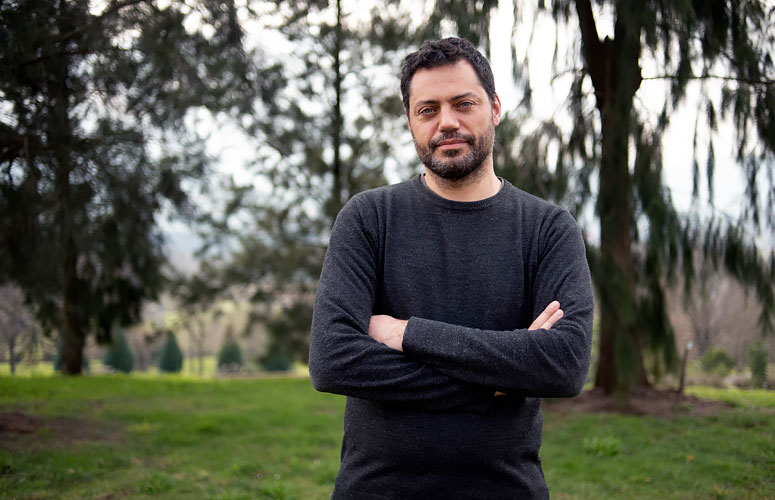Researchers from the UPV/EHU's Department of Pharmacology and the CIBER Mental Health network are taking part in a study published in the latest issue of the prestigious journal Alzheimer's & Dementia; it sheds light on the biological processes that mediate the beneficial effect of physical exercise on cognitive skills and mental health. The study finds that exercise increases the levels of certain proteins known to strengthen communication between brain cells across synapses, which may be a key factor in keeping dementia at bay.
Physical exercise during ageing protects brain health by increasing synaptic density
The UPV/EHU-University of the Basque Country is taking part in a study into the biological bases of its beneficial effect on preventing and treating Alzheimer's disease
- Research
First publication date: 03/02/2022

In order to promote healthy brain ageing in old age, various lifestyle changes are usually recommended, such as adopting a more balanced diet, boosting routine cognitive activities and, especially, devoting more time to physical exercise. Beyond the Latin proverb 'mens sana in corpore sano', the rationale behind this recommendation is based on epidemiological observations that maintain that physical activity is associated with a lower incidence of Alzheimer's and other dementias, and it is estimated that sedentary lifestyles may account for more than four million cases of dementia every year.
"Several clinical trials in which moderate physical exercise was included as therapy have shown a positive effect on both cognition and cortical thickness," confirmed Alfredo Ramos-Miguel, researcher in the UPV/EHU’s Department of Pharmacology and one of the authors of the article 'Late-life physical activity relates to brain tissue synaptic integrity markers in older adults', which has now been published in the prestigious journal 'Alzheimer's & Dementia'.
Preclinical studies in animal models have suggested that physical exercise may enhance cognitive skills by increasing synaptogenesis, i.e. the generation of new neural connections. However, as the researcher pointed out, "the difficulty in performing molecular studies in the human brain limits the possibilities of finding the biological mechanisms that mediate the beneficial effects of physical exercise on mental and cognitive health during ageing".
Memory and Ageing Project
To establish the anatomical-pathological and molecular bases of cognitive and psychomotor decline, the Memory and Aging Project (MAP) at the Rush Alzheimer's Disease Center in Chicago, USA, has been leading a longitudinal, prospective study since 1997 with volunteers who agree to undergo periodic cognitive and psychomotor assessments and to donate their organs for scientific purposes after death. The design of this study makes it possible to correlate daily habits and health states directly with structural and functional alterations in the brains of the participants.
The latest publication of that project presents results for 404 individuals whose physical activity was monitored with wristwatch or wristband-based actimeters for an average of 3.5 years ante-mortem. After death, samples were collected from up to twelve brain areas essential for cognitive and psychomotor skills; quantitative and functional analyses of eight synaptic proteins were performed on these samples, and a comprehensive histopathological evaluation, which examines ten neuropathologies associated with ageing, was made.
The results confirmed that higher rates of daily physical activity are associated across the board with an enrichment in the quantity and functionality of all the synaptic proteins analysed. This association was found to be most pronounced in brain regions related to motor control, such as the caudate nucleus and putamen. Furthermore, the relationship between physical exercise and synaptic density was independent of both the neuropathological load found in the same brain areas and the presence of pathologies affecting motor skills, indicating that physical activity can be beneficial for any elderly person regardless of their health status.
However, when analysed longitudinally, actigraphy data indicated that the beneficial effects of physical exercise are highly volatile, as those participants with a high physical routine during early life and who discontinued this habit in the last two years of life had synaptic densities similar to those observed in more sedentary participants.
In short, "this study shows, for the first time in humans, that physical exercise, even at an advanced age, contributes either towards promoting synaptogenesis processes or towards increasing synaptic resilience against the deleterious effects of neuropathological lesions", said Ramos-Miguel.
This is why public health systems should redouble their efforts to promote preventive and therapeutic strategies aimed at reducing sedentary lifestyles among the elderly, as the study indicates.
Further information
Alfredo Ramos-Miguel is a Ramón y Cajal researcher in the Department of Pharmacology at the UPV/EHU. He received his PhD in 2010 from the University of the Balearic Islands, from where he moved to the University of British Columbia in Vancouver, Canada, to undertake his postdoctoral training. There he learned first-hand about the operation and development of the Memory and Ageing Project over a period of 6 years. His work has contributed towards getting to know in greater detail about the cellular communication alterations that exist in Alzheimer's disease and which are responsible for cognitive impairment.
Bibliographic reference
- Late-life physical activity relates to brain tissue synaptic integrity markers in older adults
- Alzheimer’s Dement. 2021; 1-13
- DOI: 10.1002/alz.12530





